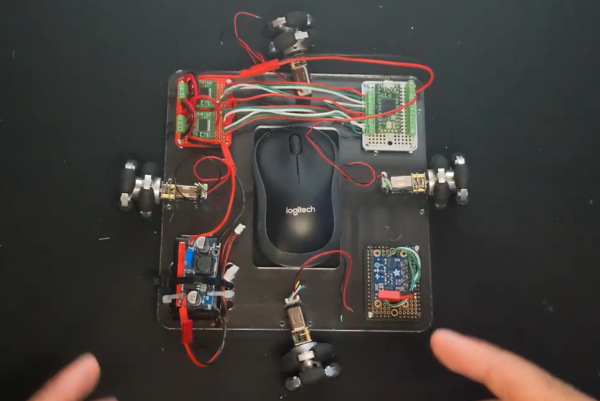These days, it can be hard to remain competitive in online shooters without spending your entire life dedicated to the sport. This leads some to explore the world of competitive aids. (AKA: cheating.) A great example is [Nick], who built a mechanical aimbot to help in this regard.
[Nick’s] build moves a mousepad underneath the mouse opposite to the desired movement direction, in order to simulate the mouse movements required to aim at targets in game. This is achieved with the aid of a XDraw A4 pen plotter, which served as a cheap prebuilt X-Y motion platform. The plotter responds to simple serial commands, which makes it easy to control. The X-Y gantry was mounted underneath the desk so the mousepad sits seamlessly on top of the desk, sliding neatly on low-friction mouse skate stickers.
With the mousepad control system built, it was then necessary to figure out how to turn it into an aimbot. [Nick] already had a machine vision tool to detect enemies in shooting game, so it was merely modified to make the right mousepad movements to get the crosshairs right where they needed to be before firing. In testing, it proved more than capable at helping a new player achieve far superior aim, as a good aimbot should.
We’ve featured similar projects before that use complex mechanical contraptions to aim for you. Yes, it’s still cheating, but it’s a lot harder to detect than a traditional aimbot. That doesn’t make it right, per se, just more subtle. Video after the break. Continue reading “Moving Mousepad Is An Elegant Aimbot”













